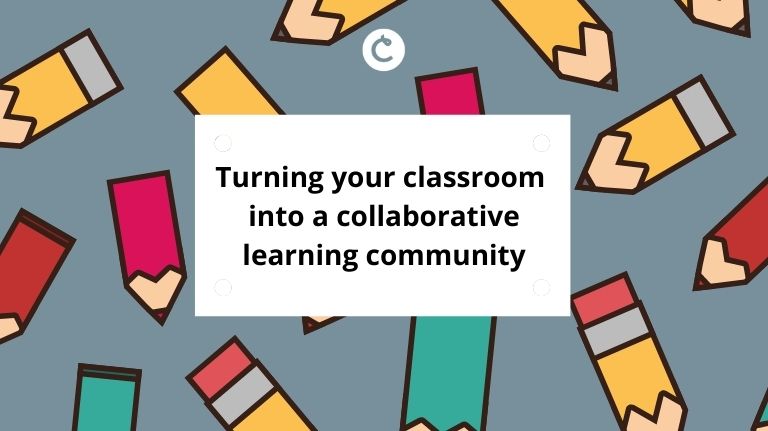Turning your classroom into a collaborative learning community
No matter what grade level you teach, creating a productive and engaging class environment is essential for student success. While it can be difficult to gain the trust and respect of your students, an effective classroom management plan can help promote a collaborative learning community and discourage disruptive behavior will set the tone for the entire year.

Andrew, a teacher in Los Angeles, tells us that there are many challenges to structuring a positive learning environment:
Students can be brutal. Sometimes they just aren’t in the mood to learn or they’ve had a bad day and want to take it out on me or other students in the class. But I’ve found that setting some behavioral rules, like raising hands to get my attention and coming prepared for class, from the beginning of the semester allows me to foster relationships with my students, and between students, and create a constructive learning environment without having to be super strict and authoritarian.
While you can’t control everyone’s actions, there are ways to structure your classroom and set ground rules to create a collaborative learning environment where students can thrive. They may even enjoy it!
– Build a classroom community: It’s important to make a powerful impression from the first day of class by setting the ground rules and energizing your students. How do you want your students to get your attention? What do they need to come to class with? You should also go over your policy on homework due dates and your expectations for students’ interactions with each other. It’s equally as important to discuss the overall goal of your class and foster a collaborative learning community among your students in order to give every student a space where their voice is respected. If you teach a science class, define the key topics you’ll be learning, your expectations on what they should get out of the class, and how they should work together to get there. If you can create an environment that your students feel comfortable and engaged in, then you can create a community where all of your students are striving towards their full potential. New York City public school teacher Ruben Brosbe made the switch from classroom management to community building and he’s not going back. Read more about his experiences in this insightful post.
– Create well-designed, engaging lessons: Fostering an effective learning environment for your students means getting them excited about the lesson. Teaching consultant George Couros suggests asking yourself, “Would I want to be a learner in my own classroom?” in order to reflect on your answer and continuously work to create an environment that students want to be a part of. (You can read more about Couros’ take in this post.) This also ties into building your classroom community. Instead of being the disciplinarian in front of the class, you then become the leader as the class works together towards a common goal. If the goal in a Freshman biology class is to learn about mammalian anatomy, you can get your students involved in the learning process by asking them what mammals they want to learn about and set one day aside a week to go over a student favorite. Giving students an environment where they have an active role in the learning process gets them excited about the lessons.
Quick Tip: With Classtime’s Collaborative Challenges, you can create a narrative around your lessons that gives your class a common goal to strive for. All of your students will be actively engaged in the lesson and you can use the instantaneous insights to improve your lessons and make a greater impact. Plus, the challenges tie in your lesson to real-world problems, showing your students the relevance of what you’re teaching!

– Continuously challenge yourself: Classroom management isn’t a one and done task. Keep a timer on your desk (smartphones work wonders) to keep track of how much time you’re lecturing, how much time is spent on group work, if there’s time spent on in-class assignments and any other tasks during class time. If you’re spending too much time on a task that isn’t helping your students reach the overall class goal, brainstorm on ways to use your time more effectively so that all of your students are able to reach their full potential. For example, maybe some of the in-class work should be assigned as homework so you can have a more productive discussion.
These are just a few tips to help create a collaborative learning community for your students but we know you have more. Share your own classroom management and community building strategies in the comments below!
Classtime can help you get started with collaborative learning in your classroom today:

